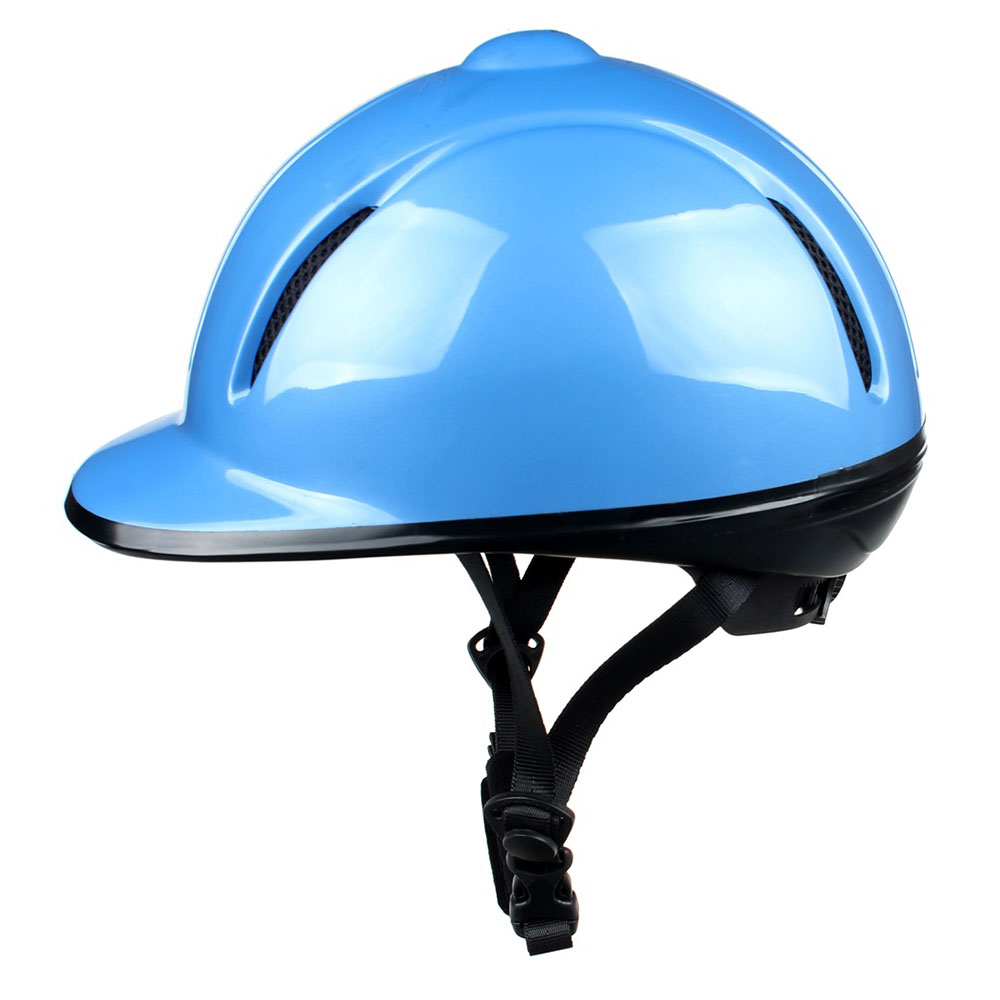Views: 0 Author: Site Editor Publish Time: 2024-08-28 Origin: Site










Horse riding is a thrilling and rewarding hobby for children, but safety is paramount. A child's horse riding helmet is one of the most critical pieces of gear, ensuring protection and confidence while they enjoy their ride. In this comprehensive guide, we will explore everything you need to know about children's horse riding helmets, from choosing the right size to understanding the key features that make a helmet safe and comfortable.
Ensuring Safety While Riding
Horse riding involves risks, and falls can happen regardless of a rider's experience level. A properly fitted helmet protects against head injuries, which are among the most severe consequences of riding accidents. Investing in a high-quality helmet ensures that your child has the best defense against potential harm.
Building Confidence in Young Riders
Wearing a helmet can significantly impact a young rider's confidence. Knowing they are protected allows children to focus on developing their skills and enjoying their time in the saddle. A helmet becomes a trusted companion, encouraging them to tackle new riding challenges.
Adhering to Safety Standards
Many riding schools and clubs have strict helmet policies to ensure all riders are safe. Using a certified helmet that meets recognized safety standards is not only a good practice but often a mandatory requirement. This ensures that the helmet has undergone rigorous testing for impact resistance and other safety features.

Measuring for the Perfect Fit
Finding the right size helmet for your child begins with accurate measurement. Use a soft measuring tape to measure around the widest part of their head, approximately an inch above the eyebrows and ears. Note the circumference in centimeters, as most helmet sizes are based on this measurement.
The Importance of a Snug Fit
A well-fitting helmet should be snug but comfortable. It shouldn't move around when the child shakes their head or feel excessively tight. A helmet that is too loose can shift during a fall, reducing its protective capabilities, while one that is too tight can cause discomfort and distract the rider.
Adjustable Features for Growing Children
Many children's helmets come with adjustable features such as dial-fit systems or additional padding. These allow the helmet to grow with your child, providing a snug fit over several years. Adjustable helmets offer a cost-effective solution for parents, ensuring long-term safety without frequent replacements.
Balancing Style and Function
Children are more likely to wear their helmets willingly if they like how they look. Thankfully, helmets come in various styles and colors, allowing young riders to express their personalities. However, always prioritize safety features and fit over aesthetics to ensure maximum protection.
Customizable Options and Accessories
Some helmets offer customizable options, such as interchangeable covers or removable visors. These features allow children to change the look of their helmet to match their outfit or mood, adding an element of fun to their riding gear.
Recommendations from Riding Experts
Consulting with riding instructors or experienced riders can provide valuable insights into the best helmet options. They can recommend brands and models that have proven to be reliable and comfortable based on their extensive experience in the field.
Regular Inspections for Wear and Tear
Regularly inspect the helmet for any signs of damage or wear. Look for cracks in the shell, compressed areas in the foam liner, or frayed straps. Even minor damage can compromise the helmet's protective capabilities, so it's essential to address any issues promptly.
Cleaning and Care Tips
Keep the helmet clean by wiping it down with a damp cloth and mild soap. Avoid using harsh chemicals or submerging the helmet in water, as this can damage the materials. Removable liners can be washed separately to keep them fresh and hygienic.
When to Replace a Helmet
Helmets are designed to protect against a single significant impact. If your child has a fall and the helmet takes a hit, it's time to replace it, even if there are no visible signs of damage. Additionally, helmets should be replaced every 3-5 years, as materials can degrade over time.



Conclusion
Ensuring your child has a properly fitted, high-quality horse riding helmet is a crucial step in their riding journey. By choosing a helmet that meets safety standards, fits well, and appeals to your child’s sense of style, you provide the best possible protection and set them up for success in their riding endeavors. Remember, safety and confidence go hand in hand, and a helmet is the first step toward a safe and enjoyable riding experience. Explore our range of children's horse riding helmets and find the perfect fit for your young rider today.